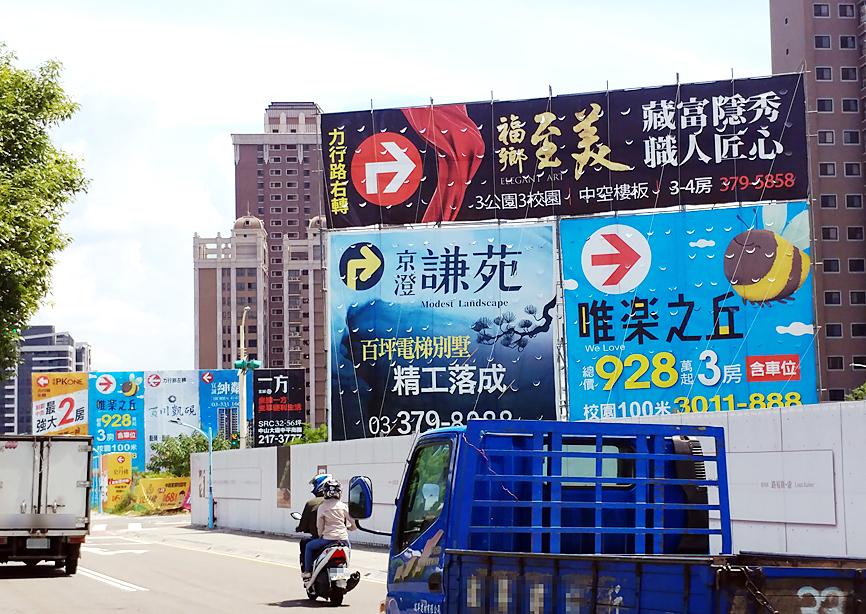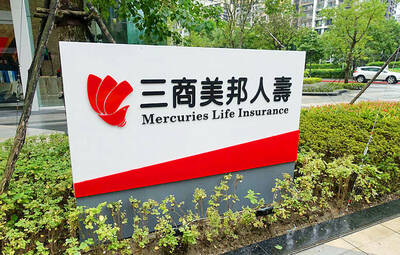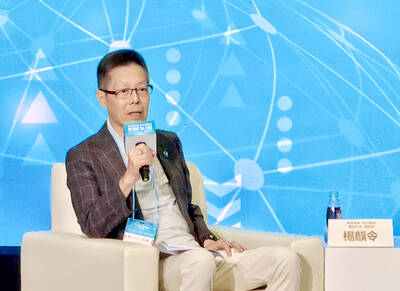The Financial Supervisory Commission (FSC) on Tuesday said that eight local banks should reduce the number of construction loans issued and enhance risk management, or they would be ordered to set aside higher loan-loss provisions.
The commission’s warning came after it last week announced that it would conduct a special examination of the top 10 mortgage lenders from this month to March, as part of the government’s efforts to rein in the overheated property market.
All local banks’ combined construction loans, indicative of the confidence of the construction sector, hit a record at NT$2.69 trillion (US$94.47 billion) as of the end of October, which accounted for 8.62 percent of their total lending, the highest ratio compared with a range of 7.13 to 9.12 percent from 2015 to last year, the commission said.

Photo: CNA
Among the nations’ 36 banks, construction loans made up more than 10 percent of eight banks’ outstanding lending, signally their concentration on construction loans, Banking Bureau Chief Secretary Phil Tong (童政彰) told a news conference in New Taipei City.
Although the eight lenders’ non-performing loan ratios for construction loans are not much higher than the average, their failure to diversify their lending portfolio would result in higher risks, Tong said, declining to name the banks.
The commission has asked the eight banks to submit improvement plans soon, and would monitor their performance on a monthly basis, Tong said.
It is not easy for banks to slash their construction loans in the short term, as such loans are usually long-term, but the commission expects banks to at least refrain from approving more new loans, he said.
If the eight banks fail to improve, they would need to set aside 2 percent loan-loss provisions on their construction loans, up from the current requirement of 1.5 percent, Tong said.

Mercuries Life Insurance Co (三商美邦人壽) shares surged to a seven-month high this week after local media reported that E.Sun Financial Holding Co (玉山金控) had outbid CTBC Financial Holding Co (中信金控) in the financially strained insurer’s ongoing sale process. Shares of the mid-sized life insurer climbed 5.8 percent this week to NT$6.72, extending a nearly 18 percent rally over the past month, as investors bet on the likelihood of an impending takeover. The final round of bidding closed on Thursday, marking a critical step in the 32-year-old insurer’s search for a buyer after years of struggling to meet capital adequacy requirements. Local media reports

TECHNOLOGICAL RIVALRY: The artificial intelligence chip competition among multiple players would likely intensify over the next two years, a Quanta official said Quanta Computer Inc (廣達), which makes servers and laptops on a contract basis, yesterday said its shipments of artificial intelligence (AI) servers powered by Nvidia Corp’s GB300 chips have increased steadily since last month, should surpass those of the GB200 models this quarter. The production of GB300 servers has gone much more smoothly than that of the GB200, with shipments projected to increase sharply next month, Quanta executive vice president Mike Yang (楊麒令) said on the sidelines of a technology forum in Taipei. While orders for GB200 servers gradually decrease, the production transition between the two server models has been

US sports leagues rushed to get in on the multi-billion US dollar bonanza of legalized betting, but the arrest of an National Basketball Association (NBA) coach and player in two sprawling US federal investigations show the potential cost of partnering with the gambling industry. Portland Trail Blazers coach Chauncey Billups, a former Detroit Pistons star and an NBA Hall of Famer, was arrested for his alleged role in rigged illegal poker games that prosecutors say were tied to Mafia crime families. Miami Heat guard Terry Rozier was charged with manipulating his play for the benefit of bettors and former NBA player and

BETTER THAN EXPECTED: The firm’s Q3 results exceeded its projections, based on ‘the underlying strength of our core markets,’ chief financial officer Dave Zinsner said Intel Corp returned to profitability and gave an upbeat revenue forecast after PC demand grew, suggesting that it is making progress on a long and challenging comeback attempt. In the third quarter, revenue rose 3 percent to US$13.7 billion. The Santa Clara, California-based company posted its first quarterly net income since the end of 2023, with earnings per share of US$0.23, excluding some items. Analysts had estimated sales of US$13.2 billion and earnings per share of US$0.01 on average, according to data compiled by Bloomberg. Fourth-quarter sales would be roughly US$13.3 billion, the company said in a statement on Thursday. Intel shares gained about